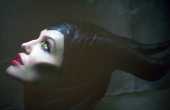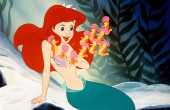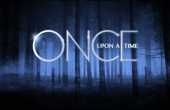Stephanie M.
I'm a content writer and novelist who loves books, writing, theater, and my cat. I have published two novels and traveled to London and Paris.
Columnist III
- Plebian Penman
- Common Writer
- Aristocratic Author
- Noble Scribe
- Lurker
- Pssst
- Hand Raiser
- Vocal
- Outspoken
- Extrovert
- Center of Attention
- Forms a Crowd
- Sharp-Eyed Citizen
- Town Watch
- Detective Deskman
- Penman Patrol
- Forensic Fiend
- Motivational Columnist
- Motherboard
- Composition
- Literary Art
- Referencer
- Actor
- Successful Pilot
- Animator
- Animaniac
- Well Read
- Chaptered Mind
- Art Collector
- Article of the Month
- ?
- Articles
37 - Featured
33 - Comments
665
- Ext. Comments
316 - Processed
183 - Revisions
180
- Topics
76 - Topics Taken
5 - Notes
243
- Topics Proc.
74 - Topics Rev.
16
- Points
12238 - Rank
4 - Score
8441
Latest Articles
Latest Topics
Pending | Apocalyptic and "Rapture" Fiction for KidsIn the late ’90s, Harry Potter burst onto the literary scene amid controversy. Many parents, Christians in particular, would not let their children read Harry Potter because of witchcraft motifs. However, when asked to provide alternative choices and reading assignments for their kids, some Christian parents advocated that they read series like Left Behind: The Kids. This caused confusion for teachers, administrators, and some other parents because Left Behind: The Kids runs on the premise that a group of teens must live on their own and survive a totalitarian, one-world government after their parents and younger family members disappeared with no explanation. Such a premise was deemed much scarier and sometimes more inappropriate than Harry Potter or similar books like Lord of the Rings, particularly because the teens were "left behind" due to a lack of religious belief (or the right kind of religious belief, as in, they knew *about* Christ but made no personal commitment to Him). Discuss how and when apocalyptic or "rapture" fiction is appropriate for kids. How young is too young? How should writers handle, or not handle, the content? How might religious writers in particular get their message across without resorting to scare tactics and leaving possible conversion as a free choice? And, why do you think some parents or teachers are eager to let kids/students read this kind of fiction, but remain so cagey about magic-based fiction/fiction in that neighborhood? |
Children's Animation and "Bad Behavior"A recent social media meme reads, "I heard a woman say she won’t let her kids watch Peppa Pig because it encourages bad behavior like jumping in puddles. I saw Road Runner and haven’t blown up anyone yet." Laughs aside, and whether the account is true or not, this does bring up how concerned adults have become about children’s behavior, where that concern is coming from, and when that concern is or isn’t justified. For instance, there are parents who sincerely believe Peppa Pig is a bad influence. Others have excoriated every series from Caillou (whiny, bratty behavior) to Fancy Nancy (melodrama) to Sofia the First, Elena of Avalor, and The Lion Guard (too much emphasis on royalty, princess mentality). Is children’s animation actually encouraging bad behavior, or do adult audiences focus too much on instances of normal childlike actions? Do any of today’s animated shows have good messages, about behavior or anything else, and what are they? Which animations are the best and worst when it comes to presenting characters and behavior kids should emulate? Discuss.
|
The Evolution of the "Family Sitcom"Family sitcoms, also known as domestic comedies or dom coms, have existed since Leave it to Beaver, Father Knows Best, and My Three Sons, which aired around the 1950s. In the ensuing 70 years, the family sitcom underwent plenty of growth and change. Simple domestic problems that could be solved in 22 minutes with commercials gave way to edgier and more realistic family-centered plotlines. Traditional nuclear families made room for single, adoptive, LGBTQ , and other "non-traditional" parents (ex.: Henry Warnamont of Punky Brewster, a bachelor senior citizen, or the grown-up incarnations of Stephanie Tanner and Kimmy Gibbler, who raise their kids while raising others’ in the same house as their patriarchs did before them. Examine the evolution of the family sitcom using a few of your favorites. You can discuss changes in family dynamics or plotlines (e.g., plotlines about keeping virginity vs. plotlines about teen pregnancy, plotlines about avoiding racism vs. ones about becoming inclusive). You could discuss race, religion, disability, or other minority statuses as topics that are getting more attention. Other topics might include the parenting styles presented on different shows, how the humor has evolved, the expectations placed on adults and children, and so on. |
The Most Pervasive Personality Types in LiteratureToday, it’s common for writers to use Meyers-Briggs, Kiersey, Enneagram, or another personality test metric to type their characters, or at least to determine how characters might act in certain situations. Even if writers don’t consciously do this, their characters can often be "typed." For instance, many people discuss the Meyers-Briggs or other types of characters in popular series like The Hunger Games, Harry Potter, Percy Jackson, and so on. In exploring literature, what personality types do you think come up most or least, and why? For instance, do you think authors tend to create characters based on their own personalities? Are you attracted or repelled by certain types of characters–say, a bookish yet adventure-seeking character like Jane Eyre, vs. a "trickster," street smart character like the Artful Dodger?
|
The 1980s: The Heyday of Scary Children's MoviesThe 1980s was a great decade for children’s movies. From The Neverending Story to The Princess Bride, from Return to Oz to Chitty Chitty Bang Bang, young audiences had all kinds of new cinematic stories to whet their appetites. Some movies, like ET and The Black Cauldron, went on to become classics (or "cult classics") and achieve great fame even if their initial box office performances were less than stellar. However, the kids’ movies of the 1980s are famous–or infamous–for scaring kids, too. On YouTube especially, but also other forms of social media, you can find detailed discussions of which films and moments from this decade were the scariest and what effects they might have had on kids. As adults, millennials might look back at these movies and wonder, "What were we, and our parents, thinking?" But we still hail these films as classics, and mainstays of the children’s cinematic canon, so to speak. Choose one, or perhaps two, of your favorite scary ’80s movies for kids. What made them memorable? What made some scarier, thus "better" or "worse," than others? Has cinema "softened" too much toward kids since the ’80s? If yes, what could it do to bring the edge back (do we need/want it)? Why do you think scary moments from kids’ movies stick in our minds, and what would it take to create such memorable moments now?
|
Good "Fat" and Bad "Fat" in FictionFiction loves a fat character…if that character is antagonistic and held up for ridicule or villainizing, that is. Antagonistic and fat characters can be found in all kinds of fiction, from Mr. Bumble in Oliver Twist, to Dudley Dursley in Harry Potter, to the sea witch in almost any form of The Little Mermaid, to (occasionally) the witch in Hansel and Gretel. To twist the knife further, these characters are often juxtaposed against "good," but malnourished and pitiable, characters from whom they take even the basic necessities (food). Of course, there are some fat protagonists in classic literature or myths and fairytales, as well. Santa Claus, typically portrayed as fat, is a personification of goodness and charity. The Ghost of Christmas Present, when juxtaposed with the gaunt yet greedy Scrooge, is a reminder that "fat" can also be healthy, prosperous, and joyful. However, most fat characters tend to be either 100% good or 100% bad in "older" forms of literature. In the last few years, authors have become more aware of these issues, and there are now more body-positive books, especially geared toward young women. However, some of them are not as positive as they seem. Dumplin’, for example, stars Willowdean, a fat girl who competes in a beauty pageant to show she’s worthy to…but then has to watch a "typical" contestant win. Watch Us Rise has Jasmine, a black girl who is put down and demonized for being both black and big. One Fat Summer has Bobby, who begins to find inner peace and acceptance by his social circle…after losing weight. How has "fat phobia" in fiction evolved and changed? How is it influenced by how our modern society views body size? Throughout the article, you might explore questions such as, what size constitutes fatness, how fat characters could be represented as more three-dimensional, and whether stories about body size lend themselves to fat phobia or pigeonholing fatness by default.
|
What Will Pandemic Fiction Look Like?I’m a writer, and right now, publishers and agents are warning fellow writers not to craft pandemic plotlines yet because it’s too soon and we are too close to the event. However, what might pandemic-centered fiction look like when the crisis is safely past and we are able to examine it with a distant, critical eye? Discuss the elements of the pandemic that might make the best fiction. What kind of characters might be most compelling? Are there certain tropes or plot twists that would lend themselves well to pandemic fiction? Also, consider whether pandemic fiction could fit into already-established genres or sets of titles (i.e., Camus’ The Plague, Love in the Time of Cholera, young adult titles like Laurie Halse Anderson’s Fever 1793, etc.)
|
Pending | The Best YA Books for Young Women of ColorEver since June 2020, I have been gratified to see more books starring women of color, and have been privileged to read some. However, I’ll leave this topic to those who are more qualified than I (a white woman)am to write it. If you were to make an essential list of YA books young women of color should read, what would be on it? Would you mix "classics" with more current offerings, and if yes, how and why? Which authors do the best job of representing female POCs, and why? Consider comparing and contrasting modern and classic characters, such as Janie from Their Eyes Were Watching God (Zora Neale Hurston) vs. Renee Watson’s Jasmine of Watch Us Rise, or any other combination of characters you would like. |
Latest Comments
| The Conjuring Universe - Religion, Horror, and Annabelle: Creation | |
Congratulations on making the lineup! As always, I was glad to help with the revisions. I also wanted to say again (I can’t remember if I mentioned it): As a person with cerebral palsy who can only type, thank you so much for discussing the efficiency and advantages of typing in the article. There have been many times I wished I could handwrite because of how people respond to it (“It enhances creativity,” and similar arguments). I can’t tell you how many beautiful journals I’ve looked at with regret and longing in bookstores. But as you wrote, “with a story burning to be written,” writers cannot quibble over the method. So thanks for reminding me there is beauty in typing *and* handwriting, and that both are valid. It reminds me of something Augustine said: “In essentials, unity. In nonessentials, liberty. In all things, love.” | Is the Pen Mightier Than the Keyboard? |
I’m thrilled to see Beth getting so much love. That was my goal with this article, and the comments tell me I did my job, so that’s great. Also, yes. I will die on the hill that Beth deserved, and deserves, better, especially from remakes and reboots. (Yes, I know. Don’t think I haven’t considered tackling this myself)! 😉 | Reinventing Beth March |
Good job! I’m something of an “unintentional” whump writer, meaning it’s not all I do and I don’t write a story seeking to do whump with it, but I loooove a good safe for work whump scene. In my case, it’s because I have an inner caretaker who wants to play. I love writing the recovery, the moment when the whumpee gets their strength and confidence back. Glad to see this made the lineup, and glad to help with the revisions! | Whump And Its Role Outside of Fandom |
Nice work! I’ve been playing with the idea of doing an article with Coraline and/or the Other Mother in it, so thanks for the inspiration. (Margin note: I’ve had a particular interest in Newsies for a while now. The Other Mother’s spider motif currently makes me think of Snyder the Spider. Maybe something that unites them with some other antagonists? Underrated villains, maybe? The kind you think you can take, but you don’t wanna mess with? Hmmmmm…) | Laika and the Power of Eyes: A Soul's Quest for Self-Possession |
First off, I want to thank you for the topic and article itself. I have cerebral palsy. It’s mild and my support needs are low, but I have suffered from health anxiety brought on by medical trauma. Because of that, I’ve also had frustration and anger leveled at me, as well as accusations of hypochondria and obsession. It’s not easy, especially as a woman, so thank you for even acknowledging that health anxiety does exist, it’s valid, and people who have it aren’t unstable. Also, I don’t mind saying, I am staunchly and unapologetically pro-life. At the same time, I can see how Rosemary’s Baby is a valuable part of the health conversation no matter one’s stance on the abortion issue. That is, I don’t necessarily think the issue is, “Guy took control and didn’t listen to Rosemary, so they ended up with a literal devil child.” I think the issue is, “Guy acted cruelly and inappropriately, and everyone ended up hurt. Everyone suffered. A life that should have been innocent and protected, wasn’t.” *That* is a conversation you can have outside politics, and I think more people should have. The same is true for Night of the Living Dead, esp. after the pandemic and all the conspiracy theories and accusations that still exist. Bravo, particularly for a Halloween article that made me think and will make others think, too! | Health Anxiety in the 1960s as a Motif in Rosemary’s Baby and Night of the Living Dead |
Great job uniting an optimistic ending for your article with the sobering truths Hollywood still hosts and refuses to face (e.g., it took until the 21st century for a Black woman to win Best Actress, LGBTQ characters are still stereotyped, and so on). | A Historical Perspective on Individuals Excluded During the Golden Age through Netflix's Hollywood Series |
Cool analysis of these villains, and while I wouldn’t have put them in the order you chose, I respect that choice because of how it lines up with the way you explain everyone’s personalities (Bonnie and Clyde-esque criminals vs. spoiled brats vs. dictator and so on). I haven’t actually seen every single movie in the Shrek franchise because I’m one of those people who tends to think, “Sequels are never as good as the originals.” But now I want to! | Villains of the Shrek Universe: From Nursery Rhymes to the Grim Reaper |





I’m a practicing Christian who doesn’t partake much if at all in horror. I know my own mind and triggers, and 9 times out of 10, we don’t mix. That said, the blending and grounding of horror with/in Christianity is a fascinating topic for me. Thanks for taking the time to address it.